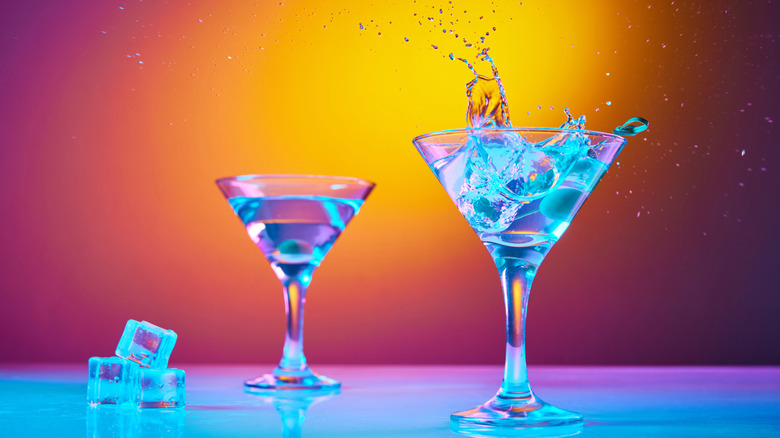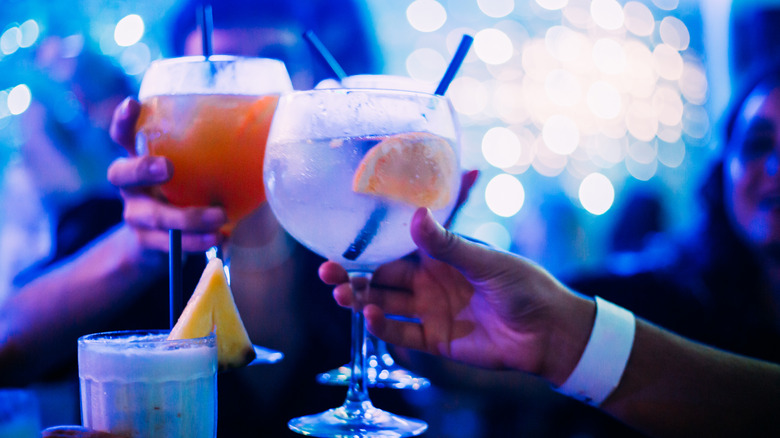The Common Drink Mixer To Use For Glow In The Dark Cocktails
Ever wondered what makes those glow-in-the-dark cocktails so captivating? The secret is tonic water, which fluoresces under ultraviolet (UV) light. This effect is due to quinine, a naturally occurring chemical once used for its medicinal qualities, and the same ingredient that gives tonic its bitter taste. Quinine was originally the key ingredient in tonic water because it effectively fought the parasite that causes malaria. European settlers in regions of India and Africa relied on it to prevent and treat the widespread disease. This practice established tonic water as a malaria remedy long before it became a popular mixer. In order to make the bitter quinine more palatable, they mixed it with gin, creating the gin and tonic.
When a black light is shone on it, the quinine emits a captivating blue glow, making tonic water a visually striking addition to any drink. Bartenders often use it to add a glowing twist to classics like the gin and tonic or to invent entirely new cocktails that showcase its unique luminescence.
This fluorescent glow is a result of quinine's unique interaction with UV light. When exposed to UV rays, quinine molecules absorb the light's energy. Instead of releasing that energy as heat, they release it as visible light, causing the quinine to temporarily enter an excited state. As the molecules return to their normal state, they emit the blue glow we see. This reaction is so strong that even the relatively small amount of quinine in tonic water is enough to produce a noticeable glow, visible in sunlight against a dark backdrop.
Other glow in the dark ingredients and cocktail recipes
Other ingredients can also create luminous effects under UV lights. Riboflavin (vitamin B2) — found in energy drinks like Red Bull, Monster Energy, and Rockstar — emits a yellow glow when under black lights. Milk glows white due to the tryptophan, an auto-fluorescent protein that absorbs and re-emits light. Chlorophyll, which can be extracted from green juices, like wheatgrass, celery juice, and spicy green juice, produces a pinkish-red fluorescence that adds drama to any drink. Not only do these juices contain natural ingredients, but they also add that mesmerizing glow to cocktail recipes to make them a more memorable experience.
A variety of cocktails made with energy drinks, milk, or those green juices can create striking effects under UV light. For a cocktail that glows blue, mix your favorite energy drink like Red Bull with a vodka of your choice, and a splash of blue raspberry vodka, highlighting the vibrant glow of riboflavin mixed with a blue tone. For a creamy option, you can make a DIY White Russian using milk in place of cream, vodka, coffee liqueur, and ice.
For a green cocktail that glows pink, combine wheatgrass juice, vodka, lime, agave, and mint to create a bold coloring from the chlorophyll with a vibrant taste. Using a variety of UV-reactive ingredients, you can make drinks that catch both the eye and the taste buds.


